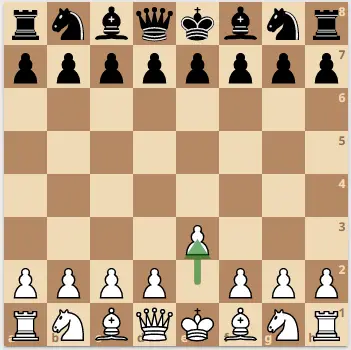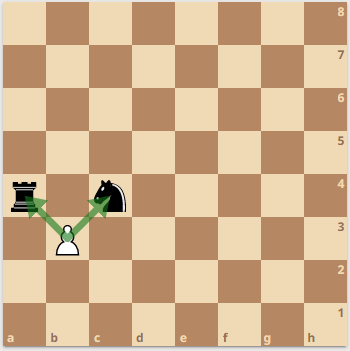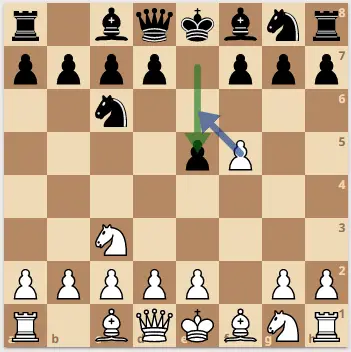If you’ve ever played a chess game or seen the game being played, you know that each piece has its own abilities. Some chess pieces move in straight lines, some move diagonally, etc.
In this post, I’ll target the most abundant piece on the board, the pawn. You might have already seen how pawns can move forward, but can pawns move diagonally too?
In chess, pawns can move diagonally only when capturing an opponent’s piece; otherwise, they move forward two squares at the beginning of the game and one square afterward. There’s also a special condition when a pawn can move diagonally called En Passant.
Keep on reading to understand all the possible moves a pawn can do, as well as the fancy, lesser-known move, En Passant.
Understanding the Pawn Chess Piece
A pawn is the most abundant chess piece, but it can be challenging to understand. That’s why it’s essential to familiarize yourself with the details of how a pawn moves and how that connects to the game.
Pawns are among the most formidable pieces on the board and they occupy the second row of each player’s setup.
When you move a pawn out of its initial position for the first time, it can take two steps forward (e2 to e4, for example). The pawn can then progress one square at a time for the test of the game.
Additionally, if you chose to move your pawn one square only, say from e2 to e3, you’ll permanently lose the ability to move two squares.

The end-game purpose you can have with your chess pawns is to push them forward as much as possible. When a pawn reaches the end of a chessboard, you’ll have the ability to promote it for more pivotal pieces, like rooks, knights, or queens.
Doing so gives you the upper hand in a game when your strong pieces are scarce; thus, promoting a pawn for a stronger piece is crucial to help you win against your opponent.
When Can a Pawn Move Diagonally?
A pawn can move diagonally when capturing an opponent’s piece or when they’re doing their signature move, En Passant.
Capturing Pieces With a Pawn
The primary condition for pawns to move diagonally is when they’re capturing an opponent’s piece. That means on their turn; the pawn can move ahead one square diagonally on either side to capture a piece.
In other words, if a pawn is sitting on b3, then it’s attacking both a4 and c4. Any opposing piece occupying either of those squares is threatened by the attacking pawn.
If both diagonal squares are empty or occupied by friendly pieces, the pawn won’t be able to move diagonally.
Pawn move diagonally one square forward when capturing a piece as indicated by the green arrows below

En Passant
Another occasion where a pawn may move diagonally is known as “En Passant.” This special rule applies when your opponent has just made their first “double-step” with a pawn. If that pawn lands next to yours, you can execute En Passant by moving your pawn diagonally behind that pawn.
You’d then land on the square behind the enemy pawn and capture it. Since the enemy pawn can move a double step only in their first move, then your pawn needs to be already beyond the center of the board. Any square from a5 to h5 should allow you to execute the move (the 5th rank), or the 4th rank for black.
Here’s an example, let’s say that your pawn is sitting on f5 and it’s your opponent’s turn. Your opponent moves his pawn from e7 to e5. You can then move your pawn from f5 to e6 and capture that enemy pawn.
Pawns move diagonally during en passant.

En Passant Requirements
- The opposing pawn must move two squares ahead. If it moves only once, you can’t execute En Passant even if the opposing pawn lands next to you.
- The attacking pawn must have crossed the center line of the board.
- If a player doesn’t take the opportunity immediately, as in right after the enemy pawn moves into position, he’ll lose the chance to apply En Passant, even if both pawns remain in the same squares a few moves after.
- Once En Passant is performed, the pawn reverts to its usual movement pattern.
Mastering Pawn Movement: Strategies and Significance In Chess Success
Pawns may appear to be the least powerful pieces on the chessboard, but their strategic importance must be considered. Understanding and effectively utilizing pawn movement is key, especially for defense.
Pawns may not be the strongest attackers, but utilizing that diagonal attack movement can provide fantastic cover for your attacking pieces.
For example, an opposing bishop on b6 is less likely to attack your knight on d4 if there’s a pawn on c3 or e3 defending it.
Also, in some cases, your opponent might fall into the mistake of having two strong pieces separated by a square, which is a golden chance for an attacking pawn as it can threat two stronger pieces at once.
For example, let’s say that your opponent has two knights on c5 and e5, and you have a pawn on e3 and another pawn on d2. If you move the pawn on d2 to d4, you’ll be threatening both knights on c5 and e5 while being protected by your other pawn on e3, which guarantees winning material.
On the other hand, poorly positioning your pawns could be a nightmare when you’re developing your pieces, especially with the bishops. Many beginners fall into the mistake of blocking the bishop’s path early on, which gives the opponent a lot more freedom on the board.
Conclusion
In conclusion, pawns can move diagonally, but only when attacking or executing En Passant. Other than that, a pawn can only move one square ahead at a time or two if it’s the first time for that pawn to move through the game.
That diagonal influence can be a strong defensive tool early on in the game as you aim to control the center and develop your pieces. However, players should take care not to block incoming bishops and knights with their pawns, which can waste a couple of turns in order to regain position.


